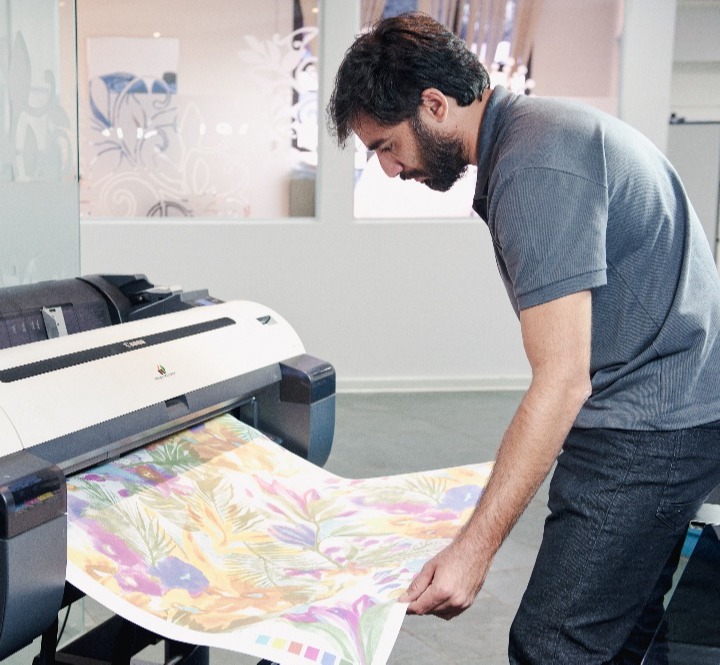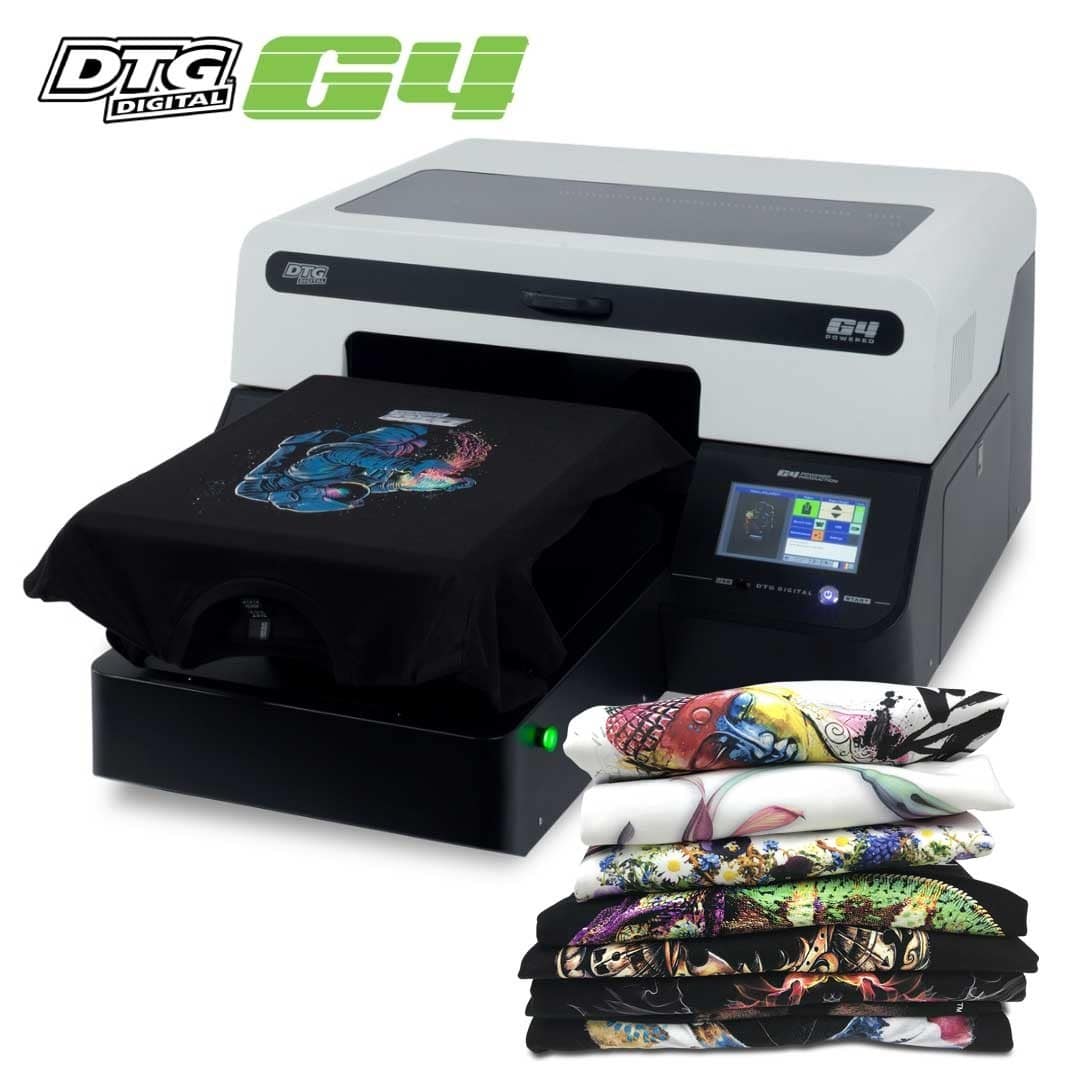Raise Your Designs with DTF Printing: A Comprehensive Overview
Wiki Article
A Comprehensive Overview to the Various Kinds of Fabric Printing Strategies
Each approach, from the meticulous craftsmanship of block printing to the rapid efficiency of display printing, serves distinct functions and supplies unique benefits. Digital printing's flexibility and environmental awareness stand in stark contrast to the quick modification of heat transfer printing.Block Printing
Block Printing, one of the earliest methods of textile design, has an abundant history that dates back to ancient people. Coming from China around 220 A.D., this method later on infected India and at some point Europe. The procedure involves carving detailed designs right into wood blocks, which are then dipped in color and pushed onto fabric to produce patterns. This technique is noteworthy for its ability to generate highly detailed and repeated styles.The accuracy and workmanship associated with block printing make it a labor-intensive procedure, yet it additionally permits a high degree of modification. Artisans can produce special patterns by combining various blocks or varying the application of color. This adaptability has actually added to the enduring popularity of block printing in both modern and conventional fabric design.
Block printing is especially valued for its aesthetic top qualities, including the slight variations in pattern and shade that result from the hand-printing process. These flaws offer an one-of-a-kind character to every item, differentiating it from mass-produced textiles. Regardless of advances in modern printing innovations, block printing continues to be a cherished strategy, celebrated for its historical significance and creative worth.
Display Printing
Display printing, an additional popular fabric design method, has actually reinvented the industry with its efficiency and adaptability. This method entails creating a stencil, called a display, and using it to apply layers of ink on the printing surface area. Each shade in the style needs a separate display, which permits detailed and vibrant multi-colored prints.
One of the crucial benefits of screen printing is its adaptability to numerous kinds of materials, including cotton, polyester, and blends. This technique is particularly suitable for large-volume orders as a result of its cost-effectiveness and speed. The toughness of the prints is another significant benefit, as the ink bonds well with the textile, ensuring long-lasting styles that withstand numerous washes.
When dried out, the style is transferred onto the emulsion-coated display making use of a UV light source. Ink is then pressed through the stencil onto the material making use of a squeegee.
Screen printing is widely utilized in the garment industry, advertising products, and custom-made clothing. Its capability for high-quality, in-depth prints safeguards its condition as a keystone strategy in textile printing.
Digital Printing
Digital printing has promptly become an advanced technique in the fabric sector, leveraging advanced innovation to produce high-resolution layouts directly onto fabric. Unlike conventional techniques, electronic printing employs inkjet printers to down payment pigment or dye-based inks onto fabrics, making it possible for elaborate and dynamic patterns with an impressive level of information and color accuracy.One of the primary advantages of digital printing is its versatility. This method permits for on-demand printing, which dramatically minimizes waste and lessens stock expenses.
Additionally, electronic printing is eco-friendly. DTF printing. It uses water-based inks and calls for less water and energy contrasted to conventional techniques, lining up with lasting methods. The accuracy of electronic printing also permits the usage of a broader variety of textiles, consisting of cotton, silk, polyester, and blends, ensuring versatility throughout different helpful hints applications
Warmth Transfer Printing
Exactly how does warmth transfer printing revolutionize material layout? This technique has brought significant innovations by allowing vivid and intricate layouts to be moved onto a variety of textiles with remarkable accuracy. Warm transfer printing includes utilizing warm and stress to move a style from a particularly created paper onto material. This process begins with printing the wanted image onto transfer paper utilizing specialized inks. When the picture is published, the paper is placed onto the textile and subjected to a warmth press, which moves the ink from the paper to the material.
Among the main advantages of warmth transfer printing is its capability to create top notch, in-depth pictures rapidly and effectively. It is specifically well-suited for tiny production runs and custom orders, making it a popular choice for customized clothing and advertising things. Furthermore, this method is flexible, accommodating different types of textiles including cotton, polyester, and blends.
In addition, warmth transfer printing is fairly cost-effective compared to Click Here various other techniques, as it calls for minimal setup and lower preliminary financial investment - DTF printing. This cost, paired with its ability for generating vibrant, long lasting prints, underscores its pivotal duty in contemporary material layout

Dye Sublimation Printing
Dye sublimation printing, a sophisticated fabric printing strategy, uses unequaled vibrancy and long life for designs on various artificial fabrics. The published transfer paper is then put on the fabric, and both are subjected to high warmth and stress utilizing a warm press.
Among the vital benefits of dye sublimation printing is its ability to generate continuous-tone prints with vivid shades and elaborate details. Unlike other printing approaches, the color comes to be component of the material instead of sitting on top of it, resulting in a breathable and soft coating. This method is especially effective on polyester and various other synthetic materials, making it a popular choice for sports apparel, banners, and home textiles. In addition, dye sublimation is eco-friendly, as it needs no water and creates marginal waste, aligning with sustainable production techniques.
Verdict
In recap, fabric printing methods useful content each offer unique benefits customized to various demands and applications. Block printing is respected for its artisanal quality, while screen printing is beneficial for high-volume manufacturing. Digital printing supplies versatility and ecological benefits, whereas warm transfer printing is ideal for fast modification. Color sublimation printing generates brilliant, long lasting designs on artificial materials. The variety and advancement within these approaches highlight the dynamic and advancing nature of the fabric printing industry.Each approach, from the precise craftsmanship of block printing to the quick effectiveness of screen printing, offers special purposes and offers distinct benefits. Digital printing's adaptability and ecological awareness stand in stark comparison to the speedy modification of warmth transfer printing. In spite of developments in contemporary printing technologies, block printing continues to be a cherished technique, commemorated for its historical relevance and creative value.
Dye sublimation printing, an advanced textile printing technique, offers unrivaled vibrancy and longevity for layouts on various synthetic fabrics. Digital printing offers convenience and environmental benefits, whereas warm transfer printing is ideal for quick personalization.
Report this wiki page